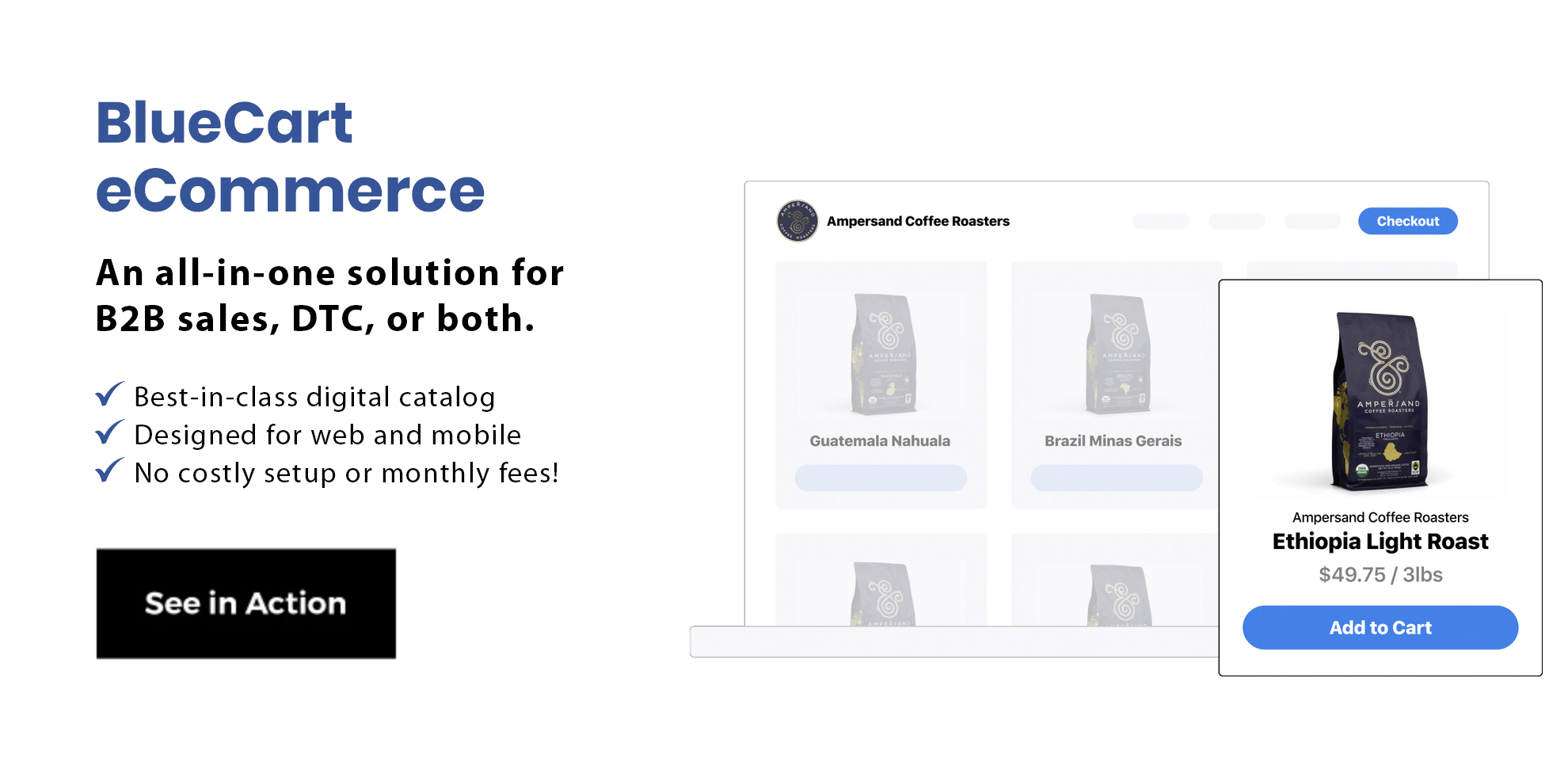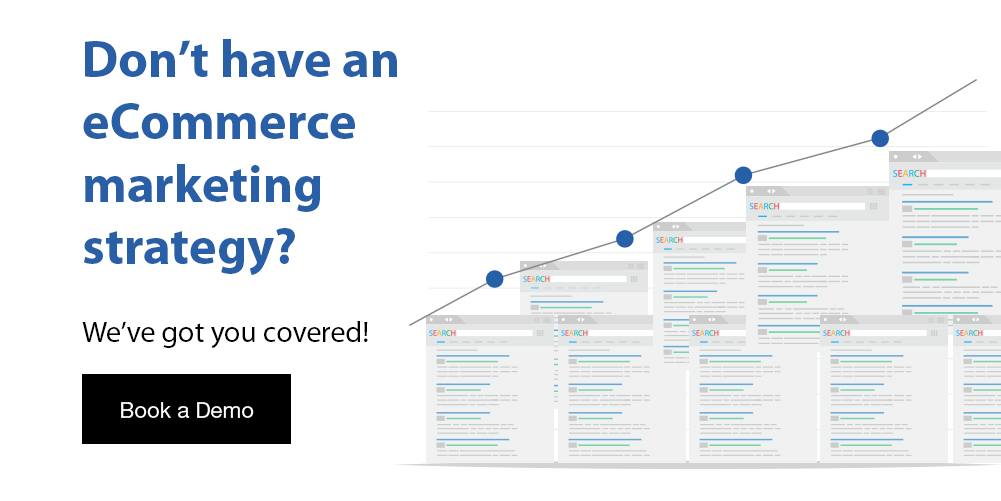Whether you've come up with one of the best eCommerce business ideas and decided you're starting an eCommerce business, or you're just looking to get hired as an eCommerce manager, there are a few points of data you'll need to understand.
Of all the valuable eCommerce inventory KPI you need to track, the most important is the eCommerce conversion rate. It gives you insight into areas where you can improve and helps you evaluate the effectiveness of your eCommerce marketing.
Keep reading to learn what the eCommerce conversion rate is, the average eCommerce conversion rate, and some industry-specific information.

Conversion Rate eCommerce Definition
The eCommerce conversion rate is the percentage of visitors to your site that actually make a purchase. This number is used to determine your site's ability to convey your overall value and make eCommerce sales.
To calculate conversion rate, use this formula:
Conversion Rate = Total Conversions / Total Visitors
Here's how it works in action.
Let's say you checked your analytics and discover that your website had a total of 15,000 visits last month. You also discover that there were 325 sales made. With these numbers in hand, you just need to plug them into the formula.
Conversion Rate = 325 Conversions / 15,000 Visitors
Conversion Rate = 2.16%
We discover that your conversion rate for last month was 2.16%. Is that a good conversion rate? Keep reading to find out.
Average eCommerce Conversion Rate
Though it varies, the average eCommerce conversion rate is about 2.5%. This means only 2.5% of website traffic ever converts, so it isn't as scary as it may seem when you calculate yours for the first time. That's why it's so important to build a proper eCommerce funnel that helps steer customers through the process and avoid losing more than necessary. If you discover that you're losing people at the final step, this means your cart abandonment rate is high, and you need to evaluate your cart pages and create an abandoned cart recovery plan.
What Is A Good eCommerce Conversion Rate?
While it varies by industry and name recognition, most experts agree that anything above 2% is a good eCommerce conversion rate. In some industries, the target will be 3% or above. Just know that a conversion rate at or below 2% means you need to reevaluate your funnel. This also varies based on what channel you use, as eCommerce email marketing has a much higher conversion rate than other methods.
eCommerce Conversion Rate By Industry
In addition to eCommerce conversion rates varying by country and age of the business, different industries can have very different conversion rates. For instance, like in the brick-and-mortar world, food and drink businesses have some of the lowest conversion rates around. These rates are usually around or below 1%. Meanwhile, the arts and craft industry boasts a 4% conversion rate. Keep this in mind when starting a new business and only compare yourself to the same industry to properly gauge how you're doing.
Apparel eCommerce Conversion Rate
The average apparel eCommerce conversion rate is about 3.5%. This is a bit higher than the average eCommerce conversion rate as apparel sales are always a good bet. However, there is still wide variation within the industry as mass-market clothing will always have a lower conversion rate than niche brands. This is because the traffic is higher, but the percentage of visitors who come with the intent to buy is lower.
Average Fashion eCommerce Conversion Rate
The average apparel eCommerce conversion rate is about 3.5%. Fashion and apparel seem like they should be interchangeable, but fashion refers only to a subsection of apparel. Fashion covers more high-end products which tend to have a higher conversion rate because the market is smaller and website visitors are more committed to making a purchase from the get-go.
eCommerce Email Conversion Rates
The average eCommerce email conversion rate is between 2% and 5%. The single most effective marketing tool for most eCommerce businesses is email. This is true for both B2B and DTC businesses and across all industries. That's why you should invest in the right eCommerce tools that can make email marketing even easier.
BlueCart eCommerce is an all-in-one online marketplace with more integrated tools than you can count. In addition to it being the best eCommerce platform for SEO and the robust digital storefront, it lets you send emails right from the platform. It even has a built-in promotional function, so you can set up a deal and send out an email blast in one place.
Mobile eCommerce Conversion Rate
The average mobile eCommerce conversion rate is about 1.8%. Unfortunately, though more traffic comes from mobile every year, the conversion rates haven't increased. Likely, this is due to a combination of websites not being optimized for mobile devices and customers feeling more secure purchasing on a desktop.
If you're wondering how would you determine the mobile eCommerce conversion rate, the answer is to look at your analytics. You should always make sure to set up Google Analytics tracking for your website. To check your eCommerce conversion rate in Google Analytics, you should view the data by device type, so you can pull just the mobile data. If you manage to get your mobile eCommerce to 2.5% or above, you'll be in the top 20% of all businesses.

eCommerce Conversion Rate Optimization
The field of eCommerce conversion rate optimization is constantly seeking out new ways to seek out as many transactions as possible. This can be done on your website, through email and social media marketing, as part of a larger campaign, and more. The most important thing is to look at your eCommerce funnel to discover what step you're losing the most sales.
For example, you may find your bounce rate is high, so people never even look at more than one page of your site. An email marketing campaign is not likely going to help resolve this particular issue. Instead, you should look at the landing page layout, page speed, and other technical issues. Remember, data is your friend.
How to Increase Conversion Rate eCommerce
Since increasing your eCommerce conversion rate is the key to success, you should try various methods to achieve the best results. Here are a few ways to increase eCommerce conversion rate:
- Offer free shipping. Shipping and handling costs are one of the biggest drivers of customer dropoff in the cart. If possible, offer free shipping for orders over a certain dollar amount. This will ensure customers aren't surprised by their total and conveys a sense of superior quality and customer support. If customers have issues with your eCommerce fulfillment or eCommerce packaging, or you don't know how to manage a warehouse, they won't become return customers. As such, this is an important area to invest in for long-term success.
- Lower page speed. Often overlooked, page speed is a major contributing factor to a website's bounce rate and conversion rate. If a prospective customer finds your site but has to wait for longer than three seconds for it to load, they'll likely leave. Even if your CTAs are on point and you are driving traffic to the site, it's meaningless if people don't stay. Look at limiting high-quality images and scripts on your pages to keep load times low.
- Use limited-time offers (LTO). LTO, or limited time offer, is a product or deal that is only available for a limited period of time. Nearly all businesses see an increase in conversions when they're running a sale. Feel free to run sales a bit more frequently, but with limited product offerings. This can both increase conversions and is a great inventory reduction strategy that helps you avoid dead stock. It's crucial to understand the deadstock meaning.
- Reevaluate your checkout. Another major point for customer dropoff is the checkout process. This is often due to too many pages, asking for too much info, or using an eCommerce payment gateway that takes customers off-site. The best thing to do is have every member of your team test out the process and note things they don't like. Try to keep this process as simple as possible and invest in an eCommerce merchant account that can be trusted.
- Invest in eCommerce automation. Investing in the right tools can take a lot of the hard work off your plate and give you valuable insights into customer trends. These programs let you act on data in real-time and maximize sales. From eCommerce marketing automation to automated eCommerce fulfillment and even automated dropshipping, there's a tool for every department.
Frequently Asked Questions About eCommerce Conversion Rate Definition
An eCommerce business can't grow if its conversion rate is too low. You need to constantly evaluate and optimize your processes to make more sales. This is easier said than done, some there are a lot of questions we receive from business owners and marketers about how it works and how to increase it.
To help clear up any misconceptions, we've pulled together some of the most frequently asked questions about eCommerce conversion rate. Take a look at the questions with our answers below:
What Is a Bad Conversion Rate?
Though it varies by industry, a conversion rate below 2% is generally bad. However, you shouldn't only try to increase your conversion rate when it's low. Take the time to build your site and marketing properly the first time. Then focus on optimization.
Can Conversion Rate Be More Than 100?
In reality, no, in analytics software, yes. If you find a conversion rate listed as about 100%, there's a problem with the way transactions are being tracked, and you need to investigate. Improper data leads to poor decision-making, so fix these issues as soon as possible.
What Is a Good PPC Conversion Rate?
A good eCommerce PPC conversion rate is around 10%. However, the average PPC conversion rate is only between 2.5% and 3.5%. Try to invest your ad budgets in only the most effective campaigns and A/B test everything that you can. This will lower the amount of money you waste and optimize your conversions.
What Is considered an average eCommerce conversion rate?
In 2022, the average eCommerce conversion rate is 1.96% in the United States. That conversion rate is just a bit behind the leader in average eCommerce conversion rates, Germany, who sits at 2.22%.
What Is a Good eCommerce Conversion Rate?
A good eCommerce conversion rate should be above 2% according to experts. However, this conversion rate can vary by industry and other factors.
What Is eCommerce conversion rate optimization?
eCommerce conversion rate optimization involves improving your business' eCommerce conversion rate through small and cautious improvements.

Don't Rate Me Because I'm Beautiful
Knowing your eCommerce conversion rate will give you the insight you need to increase sales and grow your business. Take the time to set goals and properly track your website metrics. With these numbers in hand, you can make better decisions to beat the competition.
We also recommend checking out some of the best eCommerce books and an eCommerce blog or two to give you insight into some of the new technologies and trends you can use to grow your skills.